Initial Design Ideas
When I started brainstorming for my Pinbox 3000 pinball machine, I knew I wanted to build a sketch-inspired game. I set out to create a game that looked like it had been sketched by a kid during class. Every part of the game would lean into that vibe from the lined paper backdrop to the handmade cardboard elements designed to mimic school supplies like rulers, pens, and erasers.
Originally, my win condition was going to be super specific: the player would guide the ball up a ramp to hit a “guard” holding a pencil sword. This pencil would be attached to a spinner, and if the ball hit the tip just right, the pencil would spin out of the way, revealing a hole beneath the guard’s legs. Sink the ball in the hole and you win.
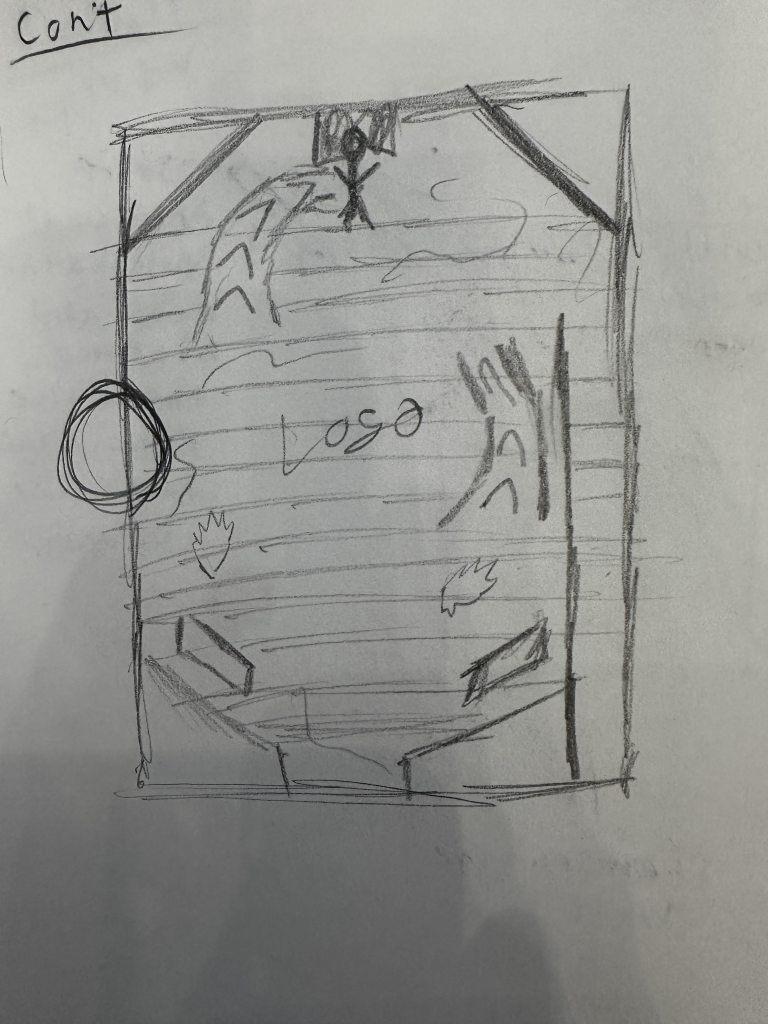
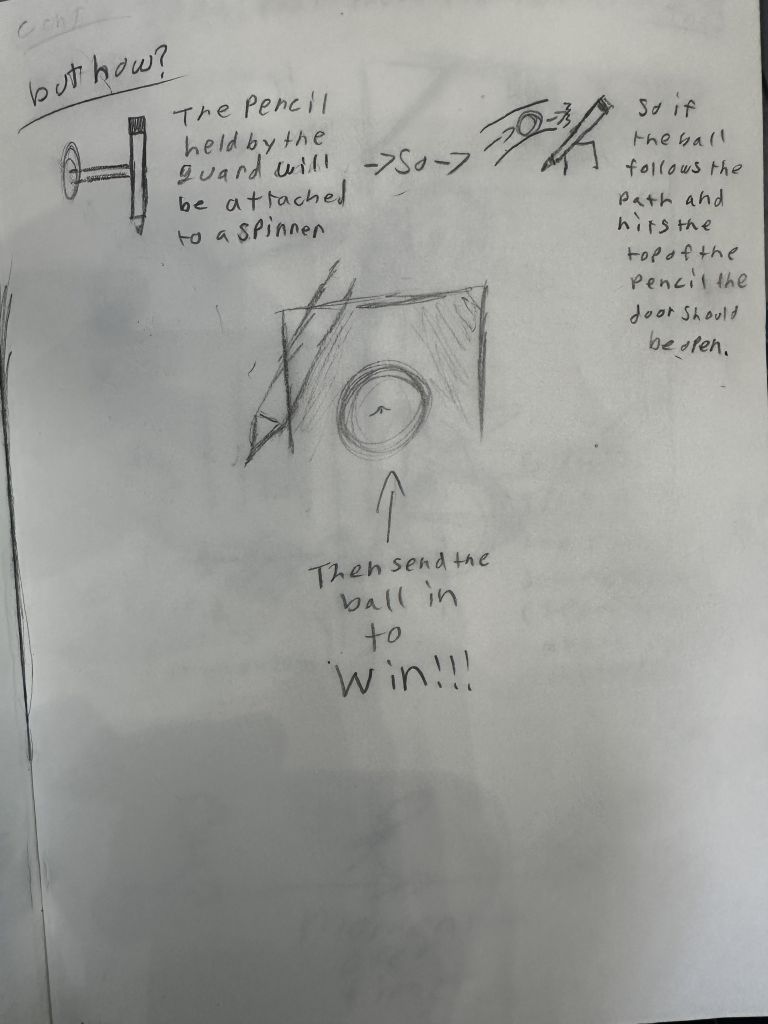
That was the plan for weeks. I moved straight into sketching a rough outline on my cardboard playfield.
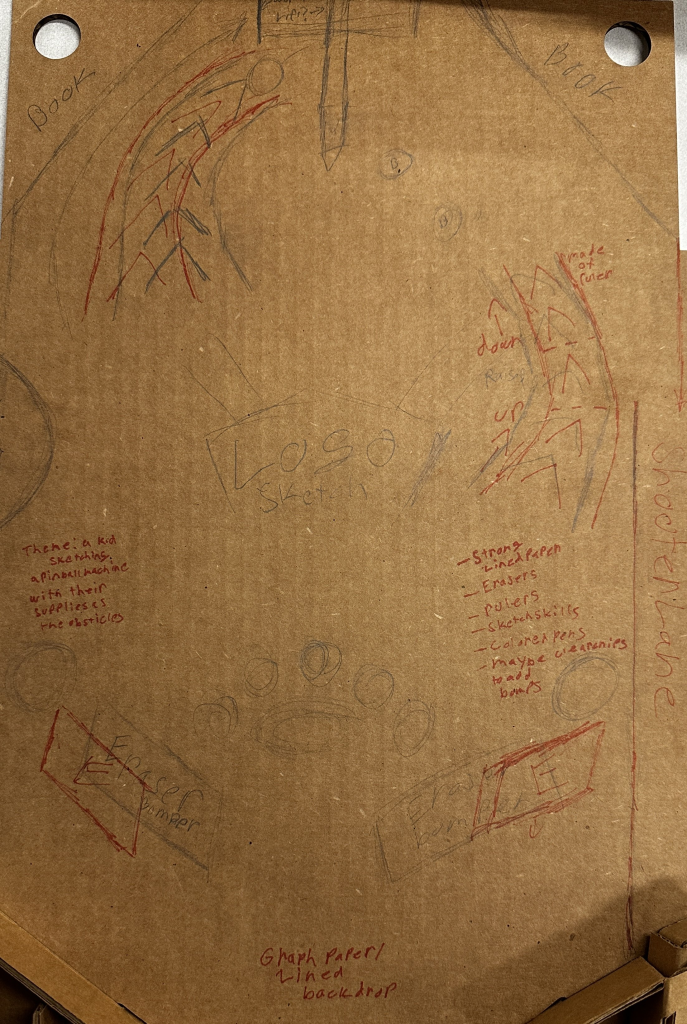
This design features 2 eraser themed bumpers at the bottom on the playfield, a ramp on the right side too simply add some more action, and finally the big ramp in the top left to hit that pencil and get you that victory. In Hindsight this design was very empty and didnt have much gameplay past the ramp. But I continued with it yet again and made a rough physcial design.
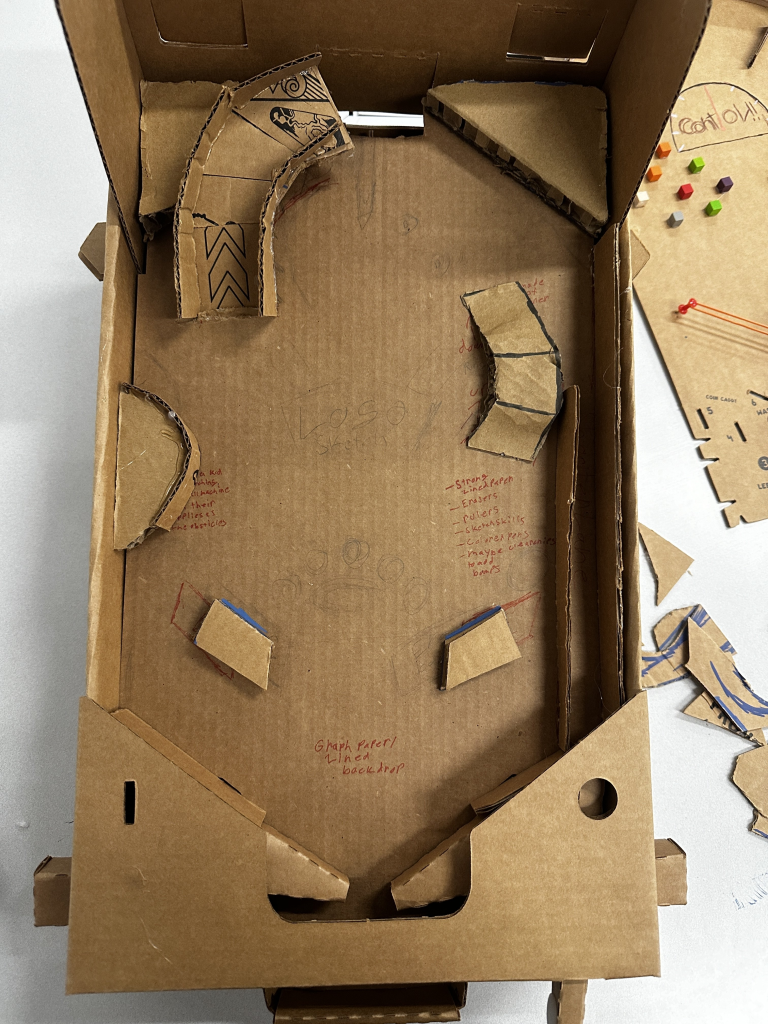
The phyiscal prototype pretty much matches the planned outline without many deviations. The main one was that the soon to be erasers were moved slightly. However as construction went on with this design, I realized I was falling behind. The guard mechanism was tricky and I couldn’t get the win condition to work the way I wanted. Everyone had compelted boxes and this was the state of mine.
So I pivoted.
Rough Physical Design & Major Pivot
After days of struggle, I brought the pinbox home and redesigned the game in one night, 9:30 PM to 4 AM. I kept the notebook sketch theme, but ditched the knight guard. Instead, I designed a doodle monster that lurks at the top of the field. The goal now was to hit the ball up a ramp and into the monster’s open mouth, damaging it like a boss fight in a video game. It felt like a natural evolution, still cartoonish and creative, but way more fun and less finicky.
The board featured a hand-drawn lined paper background, a monster made of scribbles and cardboard, books actaing as the borders and a cup on pencils as an obsticle. My loose design rules were simple: everything on the board could be made out of supplies a kid might find in their pencil case or on their desk.
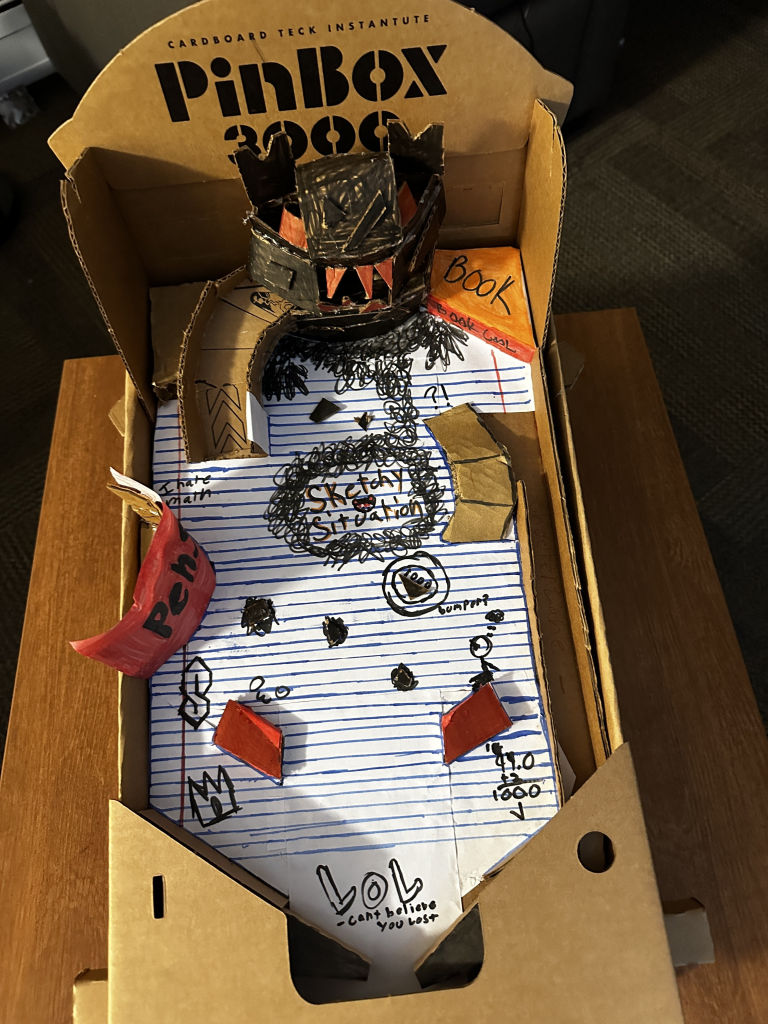
Iteration & Playtesting Feedback
While I was happy with the design, it still felt more like a novelty than a full pinball experience. That’s when I got some great advice during playtesting from my Ta Kai: having only a win condition wasn’t enough. Players need ongoing feedback, reasons to keep playing, trying, and improving. A scoring system would help with that.
So I got to work on the final iteration. I added:
- Scoring zones: Black blobs across the board represent the monster’s attacks. Hitting them gives you 100 points.
- Point bonuses: The previously useless ramp now leads to a block worth 500 points.
- Combat scoring: Hitting the monster gives 2000 points. Getting the ball into its mouth? A satisfying 10,000 points.
These additions made the game feel way more dynamic, adding the replayability and engagement it was missing before.
Final Design: The Sketch is Complete
The final version of Sketchy Situation is bold, colorful, and fun. The ramp mechanics work smoothly, and the monster’s dramatic presence at the top of the playfield gives the game a clear focal point. The layered cardboard build gives it depth, while the notebook-themed backdrop and hand-drawn elements sell the idea that it came straight from a kid’s imagination.
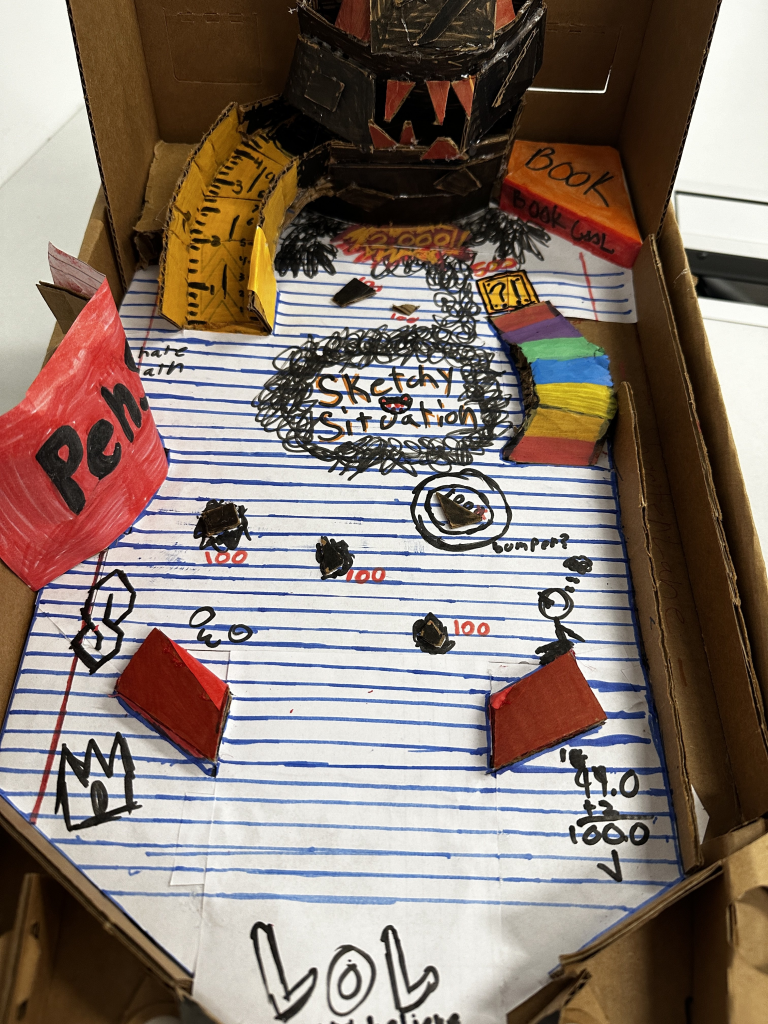
Stepping Stone to the Digital Version
This machine is just the beginning. As I move toward building a digital version of Sketchy Situation, I see so much potential for expansion:
- Real-time score tracking with animations and effects
- Combo multipliers if you hit multiple scoring blobs in a row
- Dynamic visuals (scribbles that animate when hit, explosions, pencil-drawn UI, etc.)
- Sound design to emphasize hits, bonuses, and boss fight moments
This physical build helped me test ideas quickly and solidify a theme, but in a digital space I’ll have more freedom to go wild with feedback systems, progression, and flashy polish.
Conclusion
Building Sketchy Situation was both chaotic and satisfying, just like a real sketching session. What started as a cardboard mess turned into something that feels cohesive and playable, and I learned a lot about how to pace a game, when to pivot, and how to turn feedback into stronger design.
And now? I’m ready to make it go digital.
